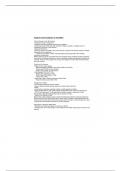Summary
Summary: Population, Health and Place (2023/2024 RUG)
- Module
- Institution
Summary and lecture notes of áll the lectures in the academic year 2023/2024. This includes figures from the PowerPoint presentations and example exam questions.
[Show more]












